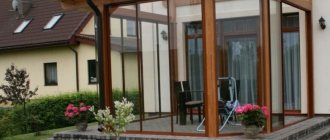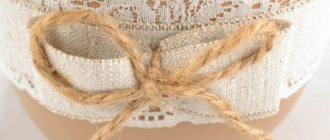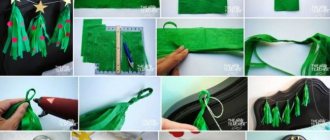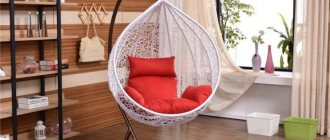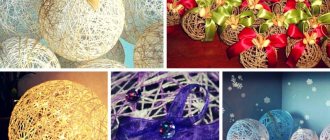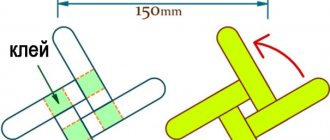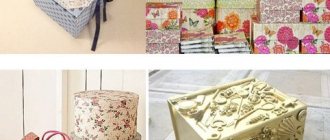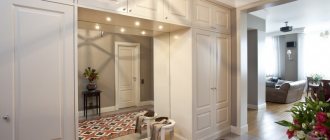DIY cork board from scrap materials
A cork board can be a real boon not only for conveniently placing notes, but also as an interesting decor.
If you need space to plan, post notes, or visualize desires, you need to figure out how to make a DIY cork board. This handy accessory - decorating an empty wall - is incredibly convenient for placing small notes and photographs, drawings or wishes. It is impossible to imagine an office, school or kindergarten without a cork board on which plans, announcements, congratulations and so on are posted. This accessory is actively gaining popularity in home use. It’s worth finding out what it is and how to make a convenient cork board for notes with your own hands.
Recommendations
There are some important guidelines to keep in mind when making a cork board.
- After the material is completely ready, it is better to cover its surface with a special protective varnish. This additional coating will significantly extend the service life of the structure, making it much more durable and resistant.
- Such a board should not be placed in rooms with a relatively high degree of humidity, since cork material does not easily withstand the negative effects of water.
- If a cork board will serve as an interesting accent in the interior of a room or simply as a decorative structure, then it is better to further decorate its surface.
This can be done not only with various acrylic paints, but also with the help of multi-colored stones, pearls, and beads.
You can watch an interesting master class on making a cork board with your own hands in the following video.
Wall organizer
The material used to create a cork board is the bark of the cork oak tree. To create a structure, you can purchase a thin base on the construction market - a rectangular sheet made from compressed cork. It is convenient to attach photos and notes, posters and various information materials to the finished product using push pins or needles.
A cork board can be used to create panels from photos and children's drawings. The plane can be easily divided into sections according to the days of the week, transforming it into a convenient planner.
A creative approach will help you make an excellent decor out of a cork board with your own hands, using various additions and decorations. The article describes how to implement your plans in practice.
Pros of cork sheets
The material from which the board is made does not look as bright and “juicy” as it could, but with a designer’s approach you will get an interesting piece of furniture. Moreover, cork oak has the following properties:
- resistance to temperature, moisture;
- refractory;
- does not electrify, does not collect dust;
- resistant to fungus and chemicals;
- durable;
- punctures tighten;
- long service life.
And, perhaps, the main factor is environmental friendliness. Cork board is a natural, light, elastic material that does not cause allergies.
Advantages and disadvantages of cork boards
This piece of furniture has a number of positive qualities that are worth noting. These include:
- Environmental friendliness and naturalness of the material are important when using the product inside a building. Safe for health. The material also has elasticity, lightness, and resilience;
- Moisture-resistant, resistant to high temperatures;
- Does not attract dust;
- Resistant to biological influences and chemicals;
- Not afraid of mechanical shocks;
- Durable.
The material has almost no shortcomings, only a boring appearance can be highlighted, but this shortcoming can be easily corrected by adding various decorative elements to it.
Environmental friendliness and naturalness of the material are important when using the product inside a building.
Material for creating a cork board
To create your own cork board, you will need:
- frame;
- sheet of cork board;
- ruler;
- pencil;
- sharp stationery knife.
As you can see, to create a cork board you need extremely simple and affordable materials. Perhaps you have an old frame lying around that you can use. Restore its appearance with paint.
The material from which the frame is made can be any: aluminum, plastic or wood, the main thing is that it is combined with the overall design of the room. And if you recently had a renovation, then perhaps there is a sheet of cork backing left in your bins - it is from this that the board discussed in the article is made.
Master Class
- Most often, cork base is sold rolled into a roll. The day before creating a cork board with your own hands, unroll it and press it with heavy objects so that the material straightens out.
- Measure the frame from the inside, transfer the markings to the cork. Clean the frame and coat it with paint or varnish. Leave to dry.
- Using the markings, cut out the required piece of cork sheet. While the frame dries, the measured section can be decorated with drawings, markings or paint.
- Frame a cork board, print out some nice pictures, family photos and attach to the board with pushpins. On this basis, notes also stick well on practical office sticks.
- Make several small boards and place them on the wall - they will serve as a bright homemade decoration for the room. Cork boards look harmonious in absolutely any room: in the nursery, living room or kitchen.
Wine cork board
An excellent solution for wall decor would be boards made from wine corks. They are comfortable and look interesting, organically fitting into any interior. Wine corks can be collected after the feast or purchased at the winery for a symbolic price.
The article presents several interesting ideas for do-it-yourself cork boards for the wall; their creation will take a little time, but the result will certainly please you.
If you have accumulated enough wine corks, you can use them to create a cork board. First of all, inspect the craft material for traces of the drink. To get rid of stains, place dirty corks in a saucepan, cover with water and boil for about half an hour. Dry them and inspect them again. The cleaned plugs can be used, the rest can be boiled again. The material used to create wine stoppers is waterproof and will not swell from boiling.
Here are some ideas for making your own cork board using cork.
What is wall cork board
These products are made from cork oak, which is crushed, pressed, and covered with veneer. Cork boards on the wall come in various sizes from 45x60 to 90x120; notes, posters, and various accessories can be easily attached. This element is an excellent option to decorate the interior and introduce unusual elements.
This item can be used for different purposes. For example, it is possible to attach notes or photographs, it is permissible to hang up keys, to come up with various pockets for inserting reminders.
There are 2 types of products:
- Office board. Usually made in a standard way, using an aluminum profile. There may be equipment with rollers for convenient rotation of the board;
- Board for home. Various variations are possible here, with pockets, shelves, frames of different shapes; if desired, it can be upholstered with fabric so that it fits better into the interior of the room.
These products are made from cork oak, which is crushed, pressed, and covered with veneer.
Map
On such a cork board it is convenient to place photographs of places you have visited or would like to visit. Using a thin stroke, transfer the approximate outline of the continents onto a thick sheet of cardboard. Then place the corks on the card, gluing them on with a glue gun. To make the card less bulky, cut the corks in half with a sharp utility knife.
This is how you can quickly and easily create a cork board with your own hands - a convenient design for posting notes and cool home decor.
Note board: 3 super master classes
Many people are familiar with the situation when a note with an important entry disappears or it is difficult to find a pen and paper to quickly write down a phone number. A DIY note board solves this problem, and it can also become an interior decoration. It is very convenient to have a specific place in the house where you can leave a message, grocery list, business card, phone number or birthday date on a piece of paper.
DIY note board
An IKEA cork board isn't very expensive, but how much more enjoyable is it to make it yourself! Of course, this will require some effort and investment, but if you make it yourself you will enjoy it much more than if you bought it. How to make a cork board?
To do this you will need:
- plywood – 1 sheet (size depends on personal desire);
- cork or cork backing - according to the size of the plywood;
- fabric - 2 cm larger in area than a sheet of plywood (it is better to take natural fabric , for example, cotton);
- glue gun;
- jigsaw (manual or electric);
- stapler for furniture;
- construction knife.
- a simple pencil;
- ruler;
- wooden strip or plinth - for the frame;
- PVA and brush;
- acrylic paint.
A DIY note board may require a man's strong hand during the manufacturing process.
The manufacturing process is quite simple:
- Place a sheet of plywood on the work surface and a cork on top of it. Adjust the size of the base to the desired size: sometimes cork is larger in scale and needs to be trimmed, sometimes plywood.
- Plywood is easy to cut with a construction knife, like cork, just make a deep cut and then separate it with your hands.
- Glue the plywood and cork together using a gun. Here you need to be careful, sometimes the cork has a pattern or relief, but they are not needed for the stand, so they should be positioned so that there is a smooth cork on the surface.
- The materials glue quickly enough, but to be sure, you can wait 1 hour .
- The front side is cork, and the plywood is the back.
- It is good to iron and steam natural fabric so that it does not become sweet or wrinkled.
- Lay out the fabric on the work surface, and place the glued panel on it so that the cork is on the fabric side, i.e. at the bottom.
- There should be a strip of fabric left around the perimeter - wrap it carefully and pin it to the plywood, i.e. on the back side.
- The fabric should be evenly stretched , without folds and not sagging on the front side.
- The stand can be deployed to check the uniformity of the fabric and its appearance.
- On the reverse side, the fabric must be glued to the plywood.
- Carefully and gradually peel off the fabric and coat it with PVA glue, and then evenly and carefully distribute it and glue it onto the surface of the plywood;
- The glue must dry. Alternatively, you can use a furniture stapler instead of glue.
- The last step is to create a frame . To do this, cut out parts of the frame from the slats using a jigsaw, having previously measured and made notes with a simple pencil.
- Glue the parts of the frame together and glue it to the stand, and after drying, paint it with acrylic paint.
After creation, it is better to let the stand stand for a day so that the glue and paint dry. How to attach it? Ready-made stands have special holes in the corners for fasteners. Those who made it themselves have several mounting options:
- screws, self-tapping screws or nails, but for this option you will have to make holes in the wall;
- liquid nails, this option does not require holes in the wall, but will have to be glued around the entire perimeter;
- double-sided tape, but you need the strongest tape that can withstand the plywood.
Important ! Instead of a homemade frame, you can use a ready-made frame from an art supply store.
Creating such a panel is not only a simple process, but also a creative one, because during it you can use your imagination and make something special.
Prices for plywood sheets
Master class “soft French board for notes”
A cute and functional board for notes and notes can be made in a couple of hours from scrap materials. Every needlewoman has cardboard, fabric with delicate colors, ribbon, buttons and threads. Make not one, but two or three soft boards - a functional composition for notes and a designer highlight in your home. The main thing is to choose the right fabric to match the upholstery and overall design.
- hard cardboard, plywood or fiberboard;
- an awl or drill with a mini attachment;
- fabric with an interesting pattern;
- material for the soft substrate – synthetic winterizer or thin foam rubber;
- knitting threads (acrylic or iris);
- braid or thin satin ribbon;
- glue;
- "gypsy" needle;
- furniture stapler;
- buttons, beads or other decor;
- scissors, ruler and pencil.
- Take as a basis a square of thick cardboard or plywood of the desired size. The easiest way to work is with a cardboard base - for beginners, a 15x15 cm format is suitable.
- On the base you need to make markings in the form of a grid - the lines should run parallel to the diagonal of the square.
- At the intersection of the lines you need to make holes with an awl, a needle or a drill with a thin drill bit.
- Cut the padding polyester the same size as the base and grab it through the holes made so that it does not slip.
- You also need to prepare the fabric in size with a margin for good bends under the base.
- Cut the ribbon to the length of the grid lines, but with some extra room for hems.
- Place the fabric on top of the padding polyester, securing it on the back side with a stapler (or glue).
- Now, using thick acrylic knitting threads, we fix the braid at the intersection points through special holes. Make sure the tape has good tension.
- On the reverse side, the tape also needs to be glued or secured with a stapler.
- At the intersection we sew or glue beautiful buttons or beads.
If you leave the clean fabric without the braid, you will get an original soft sign for notes that are attached to it with pins. Photos, notes, recipes, business cards and other valuable pieces of paper such as postcards are placed between the fabric and the braid.
Where to place a notice board in the house
“A board for notes is a must-have in a child’s room.”
We are used to thinking that note organizers are a staple of office interiors. In our house they are replaced by mirrors and refrigerators. But with the help of a handmade note board, you can very successfully enliven your room space.
An empty wall above the desk will be an excellent place to “reside” for an accessory. Shelves in this area may look bulky, and posters and calendars are somehow not entirely appropriate there. A decorative board for notes, and even created with your own hands, will be the optimal solution to the issue of decorating a work corner.
A board for notes in the design of a work corner.
The appearance of a small, interestingly shaped and designed note board in the hallway will add comfort to everyday life. It should be attached near the telephone shelf or key holder, then the accessory will not discord with the interior and perhaps even emphasize the stylishness of the hallway.
Note board in the hallway
Such a thing is irreplaceable in the kitchen. Housewives are happy to display recipes for culinary masterpieces on the information board and create lists of products to buy on it. It is in the kitchen that notes are most often left for household members.
Board for notes in the kitchen interior
A note board is a must-have in your child's room. For a child, it is better to hang a graphite version so that he can express himself without the risk of being punished, and draw with crayons or a marker not on the walls, but on a specially designated surface for this.
Graphite board in the nursery
Older children will love the magnetic board model for notes. On it they can attach a schedule of lessons and bells or arrange a mini exhibition of drawings.
Magnetic board for notes will appeal to teenagers
If you think about the location of such furnishing elements, then in addition to traditionally fixing them on the walls, which is certainly convenient, boards can be hung on doors. The advantage of this solution will be that the accessory is always in front of your eyes. However, writing on a note board hanging on the door, whether made by yourself or bought in a store, will not be very convenient, since the door leaf is movable and will need to be held so that the board does not “run away” from the marker.
Placing a notice board on the door
Another popular place to mount information boards is in the refrigerator. Here you can also experiment and use its actual wall as a surface for attaching notes, without any additional elements. For greater clarity and for aesthetic purposes, the information field should be highlighted with a frame. For example, magnets can be placed around the perimeter of an improvised note board.
Original note board on the refrigerator
Let's look at several not-so-complicated options for making information boards at home.
Keeping in mind that markers write only on smooth surfaces, you should use plastic or glass. In our case, the accessory will be created from an A3 photo frame. We remove the glass from the structure and paint one of its sides with white paint. Let the layer dry and put the product back together. You can completely simplify the task and replace the stage of painting the glass by placing a sheet of white paper under it.
DIY marker board for notes
You will be able to use the resulting note board in different ways. Most often, it is immediately sent to the wall and made into a regular reminder. Less often, a homemade product is made mobile, that is, it is picked up and walked around the room, making the required notes. It makes sense to attach a marker close to the accessory.
The marker board can be made mobile
A cute and functional design can be assembled from scrap materials in just a couple of hours. It is made from cardboard, a piece of pleasantly colored fabric, braid, buttons - in general, whatever the housewife always has on hand. You can make a whole composition from wall boards for notes, assembled with your own hands. A functional selection of accessories will become the interior highlight of the home.
French note board
What to prepare for work
The first thing you need is a solid base. It can be made from plywood, but if you don’t have it at hand, use thick cardboard, maybe even a piece of fiberboard. To make the product soft, you will need to make a padding polyester or foam rubber backing. It is important to choose a fabric with a color and pattern that matches the overall interior design of the room. To decorate the note board, prepare:
- braid or narrow thin ribbon made of satin;
- beads;
- stones;
- buttons.
The tools you will need are: an awl, a ruler, a furniture stapler, a needle with a large eye (a gypsy needle as an option), scissors.
Work progress
It will be easier for beginning needlewomen to work with a base that is not too dense, such as cardboard. A square of a given size is cut out of it. Next, on the base of the note board, make diagonal markings with your own hands so that you get a grid.
Cut the base to the desired size
At the intersection of the lines you will need to make neat holes. Use an awl or large needle. The holes will be needed to fix the padding polyester to the base. Please note that the backing is cut to the size of the cardboard, while the decorative fabric layer is cut out with extra room for hems. The cut is placed on the backing and secured on the back side with glue or stitched with a stapler.
Pin the fabric on the wrong side
All that remains is to finish the board for notes. We pass the braid through the holes made in the base, monitoring the quality of the thread tension. At the intersections of the ribbons we will attach beads or an unusual button design. The tape will act as a note holder.
Pull the tape diagonally
If you stop fussing with weaving the note board with braid, you will get a soft surface to which you can attach reminders with pins.
Secure the tape at the intersections
Chalk writing board
This organizer will help you get rid of piles of papers. When making a chalk board with your own hands, feel free to mix paints to give its surface exactly the color that is pleasing to your eye. As with the French board, you will need a rigid base, perhaps a ready-made picture frame. This base will need to be painted, but not with pure acrylic paint, but with a mixture of it and grout for the seams. The ingredients are mixed in the following proportion: add 1/5 spoon of grout to one spoon of paint.
Chalk Board Ingredients
The cardboard is coated with this composition in several layers until an opaque surface is obtained. The border frame of the note board is also painted, but with contrasting paint.
The surface is covered in several layers
The dried base must be sanded with a piece of chalk. Lay it flat and rub the surface well. The resulting dust is removed with a sponge. All that remains is to assemble the structure and hang it in the chosen place.
If you decide to create a note board with your own hands in a minimalist interior, refuse to frame the base. Simply cut a piece of plywood and paint it with the above composition.
DIY chalk board for notes
Master class “modern board for notes”
If you want to make a convenient thing of modern design, then make such a tablet board for notes or photographs. How many of these tablets to make, decide for yourself - it all depends on the idea. When you implement several boards, it will be an exposition with interesting inspiring pictures, postcards and notes. Moreover, it is not at all difficult to make it from a purchased document holder tablet with your own hands.
- tablet holder for documents (buy at the office);
- acrylic paint;
- nails and hammer;
- Double-sided tape.
